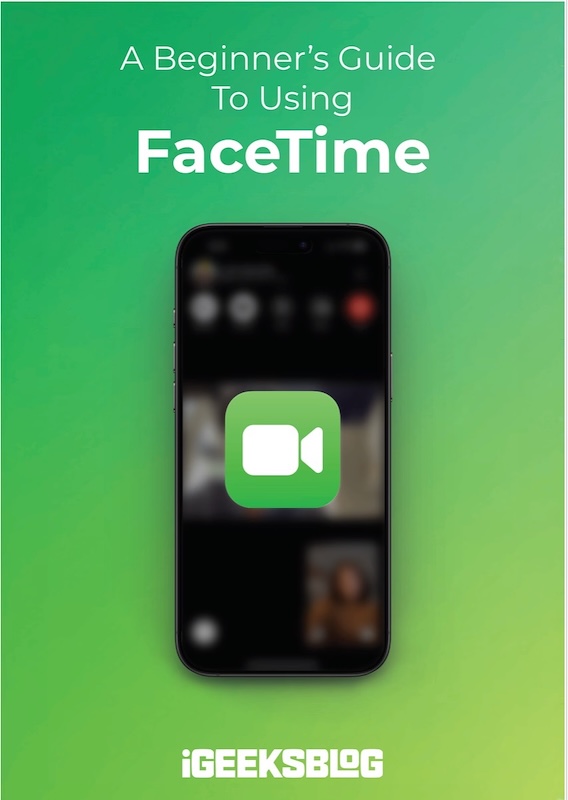
FaceTime Like a Pro
Get our exclusive Ultimate FaceTime Guide 📚 — absolutely FREE when you sign up for our newsletter below.

FaceTime Like a Pro
Get our exclusive Ultimate FaceTime Guide 📚 — absolutely FREE when you sign up for our newsletter below.
Apple's homeOS could redefine smart living. It's more than a speaker—it's the future of your connected home. Here's what we know so far.
Apple is quietly building something big for your home, and it’s more than just a smart speaker. After years of leaks, job listings, and behind-the-scenes testing, Apple is getting ready to launch a brand-new software platform called homeOS. It’s expected to debut with a redesigned HomePod that includes a screen, and together, they could mark Apple’s biggest move in the smart home space yet. Here’s everything we know so far about homeOS.
homeOS is Apple’s upcoming smart home operating system. Think of it as iOS, but built specifically to run on devices around your house. It’s expected to be based on tvOS (the same software that powers the Apple TV and the current HomePod), but with a focus on smart home controls, Apple Intelligence, and voice-first experiences.
The operating system could run on a new Apple device that some are calling the HomePad—a cross between an iPad and a HomePod. This will be Apple’s first smart display, and homeOS will be the software driving it.
Until now, the HomePod has run on audioOS, Apple’s internal name for its smart speaker operating system. It’s based on tvOS, and Apple publicly refers to it as HomePod Software. Aside from not having a proper public name, this OS lacked an interface, dedicated features, and was largely underutilized.
However, Apple is about to change that with homeOS, introducing a visual interface, smart features, support for controlling smart home devices, making FaceTime calls, running Apple Intelligence, and more.
Unlike the iPad, this device will likely live on your countertop, be mounted on a wall, or stay docked in a room where the whole family can use it. Simply put, Apple wants to do for your home what the iPhone did for your pocket.
Apple hasn’t officially confirmed homeOS by name, but it has become increasingly clear this is the name for the software unifying Apple’s smart home efforts. Here’s a concise timeline highlighting the development and mentions of Apple’s homeOS:
homeOS will bring together a lot of familiar Apple elements with new twists tailored for your home.
Apple is building homeOS to feel like something you already know but made for the whole family to use together. The home screen could look a lot like what you see on iPhones and iPads, with a grid of apps, a dock at the bottom, and widgets you can customize. But it’s designed more for shared use than personal productivity.
One smart touch is how the display changes based on how far you are. If you’re just walking by, it might show a screensaver with photos. But when you step closer, it switches to the full interface so you can interact with it.
Most of the time, you won’t even need to touch the screen. Siri is meant to be the primary way to control things. It’ll recognize who’s speaking and give personalized answers based on that person’s preferences.
There’s also a widget-focused mode that shows useful stuff like timers, reminders, or the weather, so you don’t have to open an app for simple tasks. Everything’s meant to be quick, easy, and family-friendly.
Some features are heavily rumored for the upcoming HomePod with screen a.k.a HomePad. However, there’s not much info around them.
While Apple hasn’t revealed specifics, we can expect the usual Apple stance:
At launch, homeOS will likely run on the new HomePod with a display. This device will reportedly feature:
Over time, Apple could expand homeOS to future versions of Apple TV or even repurpose older HomePods.
Thanks to support for Matter and Thread, homeOS will work with accessories from other brands too, including Google and Amazon certified devices. However, third-party app support won’t be available at launch. Apple may add it later with homeOS 2.
All signs point to Apple unveiling homeOS at WWDC 2025 in June, with the HomePod display launching later in late 2025. A premium version with a robotic arm is reportedly coming in 2026.
Meanwhile, Apple will officially end support for the previous version of Apple Home in the fall of 2025, according to a report from MacRumors. Users must upgrade to the newer HomeKit architecture to avoid losing access to accessories and automation. This upgrade offers features like guest access, support for robot vacuums, Activity History, and more reliable performance for homes with many devices. You can upgrade in the Home app under Home Settings > Software Update.
Apple is finally giving the smart home its own platform—and this time, it’s serious. homeOS looks like Apple’s long-awaited answer to Google Nest and Amazon Echo Show, but done the Apple way: more privacy, more polish, and tighter ecosystem integration. With Apple Intelligence and Siri at its heart, this isn’t just a display with widgets. It’s a smart home hub that could redefine how you live with tech in your house.
Don’t miss these related reads: